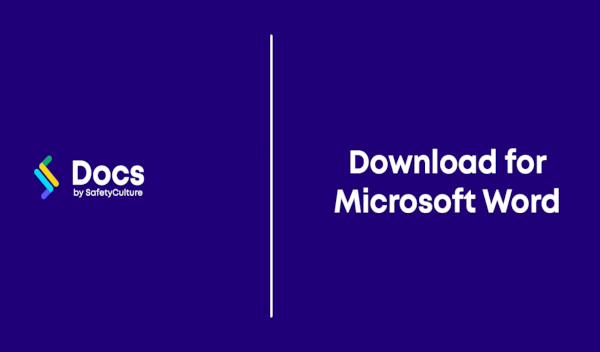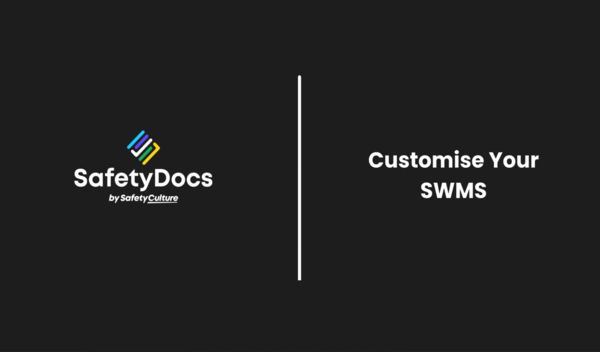Working in Roof Spaces Safe Work Method Statement
- Instant Document Delivery via Email.
- Add to your existing management system.
- Can assist in ensuring workers are adequately trained.
- Customisation instructions provided.
- Microsoft Word Format (Fully editable).
- Only pay once (no subscriptions required).
Working in Roof Spaces Safe Work Method Statement (SWMS)
This Working in Roof Spaces Safe Work Method Statement (SWMS) covers hazards and controls associated with working in ceiling spaces and subfloors. For this SWMS, these spaces will be referred to as ‘enclosed spaces’.
For any work using height access equipment (e.g. EWP, scaffolding etc.) to access a ceiling space, ensure a dedicated SWMS relating to this equipment is also in place.
Note: this SWMS has been updated to meet compliance with the new Queensland regulations for working in domestic roof spaces, effective January 1, 2025.
Job Steps Covered in Working in Roof Spaces SWMS
- Isolated Work: Establishes a 'Buddy' system for safety and communication when working alone in enclosed spaces.
- Work Area Set-up: Focuses on isolating electrical supplies and a safe environment before commencing work.
- Entering Ceiling Space: Outlines precautions to prevent falls and injuries when accessing ceiling spaces.
- Working in Ceiling Space or Underfloor: Details safety measures to mitigate risks such as electrocution and heat stress while performing tasks in these areas.
- On Completion: Electrical fittings and fixtures are checked for damage before concluding work.
- Emergency Response: Provides controls for responding to injuries, environmental hazards, and emergencies effectively.
Each purchase of our SWMS comes with a complimentary copy of the Legislation & Codes of Practice Reference List, valued at $19.95. This valuable resource provides an up-to-date overview of relevant laws and standards, further supporting your compliance efforts.
Key Features of the SWMS
- Regulatory Compliance: Assists in meeting compliance with Australian health and safety regulations.
- Hazard Management: Comprehensive identification and control measures for high-risk construction work, including asbestos disturbance and fall risks.
- Customisation Options: Easily add your company logo and modify the document to suit your specific needs.
- Instant Document Delivery: Receive your SWMS via email immediately after purchase, allowing for quick implementation on-site.
Who is it Suitable For?
This SWMS is ideal for a range of professionals, including:
- Construction workers
- Site supervisors
- Safety officers
- Contractors involved in ceiling and subfloor work
- Any personnel responsible for health and safety compliance in construction projects
Ensure your team is prepared and protected while working in potentially hazardous environments. Purchase the Working in Roof Spaces SWMS today and take a proactive step toward workplace safety and compliance.
- Instant Document Delivery via Email.
- Add to your existing management system.
- Can assist in ensuring workers are adequately trained.
- Customisation instructions provided.
- Microsoft Word Format (Fully editable).
- Only pay once (no subscriptions required).
Working in Roof Spaces Safe Work Method Statement (SWMS)
This Working in Roof Spaces Safe Work Method Statement (SWMS) covers hazards and controls associated with working in ceiling spaces and subfloors. For this SWMS, these spaces will be referred to as ‘enclosed spaces’.
For any work using height access equipment (e.g. EWP, scaffolding etc.) to access a ceiling space, ensure a dedicated SWMS relating to this equipment is also in place.
Note: this SWMS has been updated to meet compliance with the new Queensland regulations for working in domestic roof spaces, effective January 1, 2025.
Job Steps Covered in Working in Roof Spaces SWMS
- Isolated Work: Establishes a 'Buddy' system for safety and communication when working alone in enclosed spaces.
- Work Area Set-up: Focuses on isolating electrical supplies and a safe environment before commencing work.
- Entering Ceiling Space: Outlines precautions to prevent falls and injuries when accessing ceiling spaces.
- Working in Ceiling Space or Underfloor: Details safety measures to mitigate risks such as electrocution and heat stress while performing tasks in these areas.
- On Completion: Electrical fittings and fixtures are checked for damage before concluding work.
- Emergency Response: Provides controls for responding to injuries, environmental hazards, and emergencies effectively.
Each purchase of our SWMS comes with a complimentary copy of the Legislation & Codes of Practice Reference List, valued at $19.95. This valuable resource provides an up-to-date overview of relevant laws and standards, further supporting your compliance efforts.
Key Features of the SWMS
- Regulatory Compliance: Assists in meeting compliance with Australian health and safety regulations.
- Hazard Management: Comprehensive identification and control measures for high-risk construction work, including asbestos disturbance and fall risks.
- Customisation Options: Easily add your company logo and modify the document to suit your specific needs.
- Instant Document Delivery: Receive your SWMS via email immediately after purchase, allowing for quick implementation on-site.
Who is it Suitable For?
This SWMS is ideal for a range of professionals, including:
- Construction workers
- Site supervisors
- Safety officers
- Contractors involved in ceiling and subfloor work
- Any personnel responsible for health and safety compliance in construction projects
Ensure your team is prepared and protected while working in potentially hazardous environments. Purchase the Working in Roof Spaces SWMS today and take a proactive step toward workplace safety and compliance.


